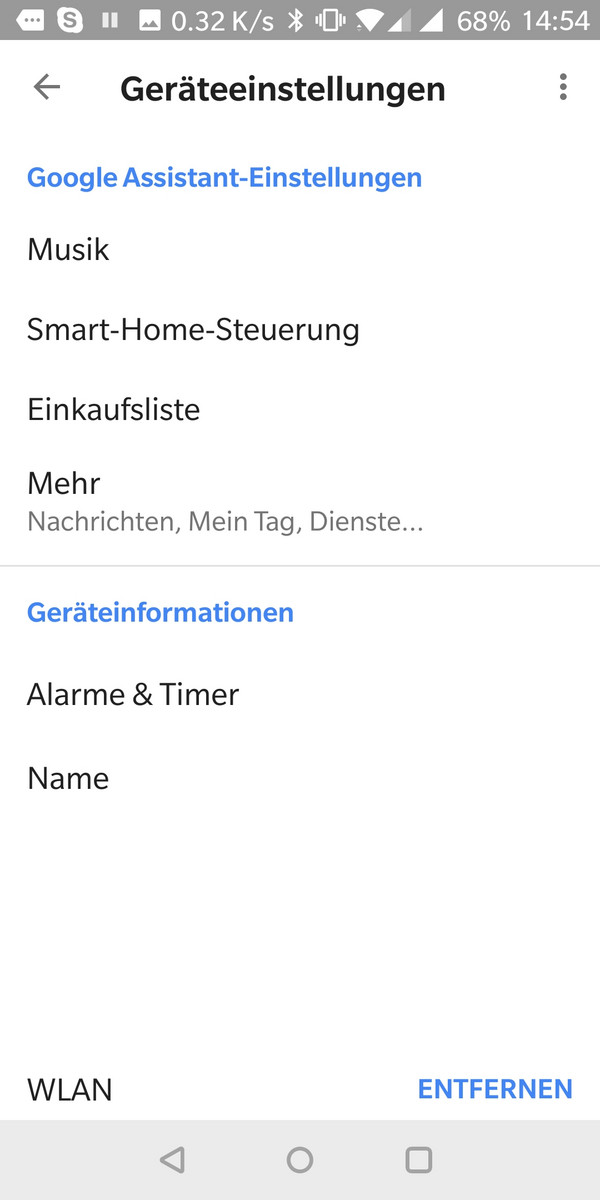Table of Content
”, but for people like me who weren’t looking for them then, but now want/need one, this is a good deal. Your phone is far more capable than a Google mini when it comes to invading privacy, no one seems to bat an eyelid. Could probably get Officeworks to price beat this. This app is hit or miss on whether it will work properly. When it doesn't, it absolutely doesn't and most likely will continue to not work for several days in a row.

Indeed, it's possible to let the device run normally for an extended period of time while dumping the entire flash content from time to time. In 2014, fail0verflow was able to root Chromecast devices with a vulnerability affecting the bootloader. A buffer overflow vulnerability triggered thanks to a special USB peripheral led to a full secure boot bypass. The vulnerability is detailed here and there. Use the Home app to control on/off, volume, playback, inputs, and more for your connected streaming and media devices.
The FT2232H in SPI and Sync FIFO Mode
The FPGA is directly clocked by the 60MHz signal generated by the FT2232H when it's used in this mode. This section gives some information concerning the software and gateware architecture behind NandBug. It's not absolutely necessary to read this section to understand the rest of the article. These evenly spaced and sized solder balls will help greatly when it comes to solder the Interposer to the Google Home PCB.
Manually soldering thin wires to the BGA footprint for breaking out the NAND Flash lines could have been risky because of signal integrity issues. It wouldn't have been a very clean and, more importantly, reliable solution. Repeatedly desoldering and soldering back the NAND Flash would have been annoying and could have caused damage to to the PCB.
Building & Hardware
This bitstream will generate a FSM that's able to program pages. The pages addresses and data are received from the FT2232H using the Sync FIFO Mode. This bitstream will generate a FSM that's able to erase blocks. The addresses to erase are received from the FT2232H using the Sync FIFO Mode.

While all the executable data is apparently verified, having a total control on all the NAND Flash data does open a rather large attack surface. The simple file utility can be used against this image to reveal it's in fact a Squashfs filesystem. A glance at the bootloader/berlin_tools/bootloader/nand_ctrl/mv_nand.c file is enough to understand the ECC is calculated by the hardware of the main SoC itself. The NAND Flash hardware peripheral of the processor is fully responsible from computing it.
Kitchen
I also commonly use them to set reminders, add things to my shopping list, or ask if it will rain soon. Just start with “Hey Google” to get answers from your Google Assistant, tackle your day, enjoy music or TV shows, and control your compatible smart home devices. And with Voice Match, the Assistant can tell your voice from others—up to six people can get personal assistance on each device.

I'll for sure use it again in future projects. However, please note that using both the SPI mode and Synchronous FIFO mode of the FT2232H requires adding a EEPROM to the BOM. This EEPROM contains configuration data for the FT2232H and can sometimes be omitted. This push button is not accessible without cracking the case open. Pushing it at boot time will force the bootloader to boot from the USB port of the device. However, only signed code can theoretically be executed.
PurchaseGoogle Nest Mini - Charcoal
That's why, for this project, I chose to rely on nMigen. The very same HDL concepts do of course apply, but can be expressed with the syntax a convenience offered by Python. Everything is now finally ready on the hardware side. The Google Home Mini PCB + Interposer Board can be connected to the NandBug Main Board. The Interposer board, soldered on the Google Home Mini PCB, ready to be used.
Makes no sense how it can operate flawlessly for daya on end. And then, out of the blue, turn into the most worthless space consuming app downloaded to my phone. Visit the Google Nest Safety Center at safety.google/nest to learn more about how we protect your information and respect your privacy.
Google Home and Google Home Mini are Wi-Fi enabled smart speakers powered by the Google Assistant. It can play music through Spotify, keep track of your diary, control compatible smart products, and more – all through simple voice commands. Google Home is a Wi-Fi-enabled smart speaker powered by the Google Assistant. Control compatible smart products from the video display or with voice commands. This sleek control centre is powered by the Google Assistant and can control media devices, lights, display photos and more. I picked up the nest mini earlier today from Bunnings .
Overall, I'm quite happy with how NandBug is working. The NAND Flash dumping and programming features are reliable. This script will simply generate the Passthrough bitstream and upload it to the FPGA. Generate a list of blocks to erase and pages to program. This step can optionally be skipped if a LAST_DUMP file is provided. For unidirectional signals, this connection can be achieved directly.
My goal will be to modify the NAND flash content until I can execute my own code. The Google Home Mini is protected by some kind of secure boot. Bootloader and Kernel are cryptographically verified. While extremely informative, the attack described by the presentation cannot be used against my own device anymore. Finally, it's important to note that the main CPU comes without public documentation. Very few details about this component are available online.

Safety starts with understanding how developers collect and share your data. Data privacy and security practices may vary based on your use, region, and age. The developer provided this information and may update it over time.
The NandBug System
I sadly realized the Google Home Mini was not booting anymore. I quickly understood how naive I was by reading the init.rc script from the Kernel initramfs. Both the cache and factory_store partitions are mounted with the noexec flag. Reading through the init.rc script of the initramfs, it appears these two partitions are YAFFS2 partitions.

No comments:
Post a Comment